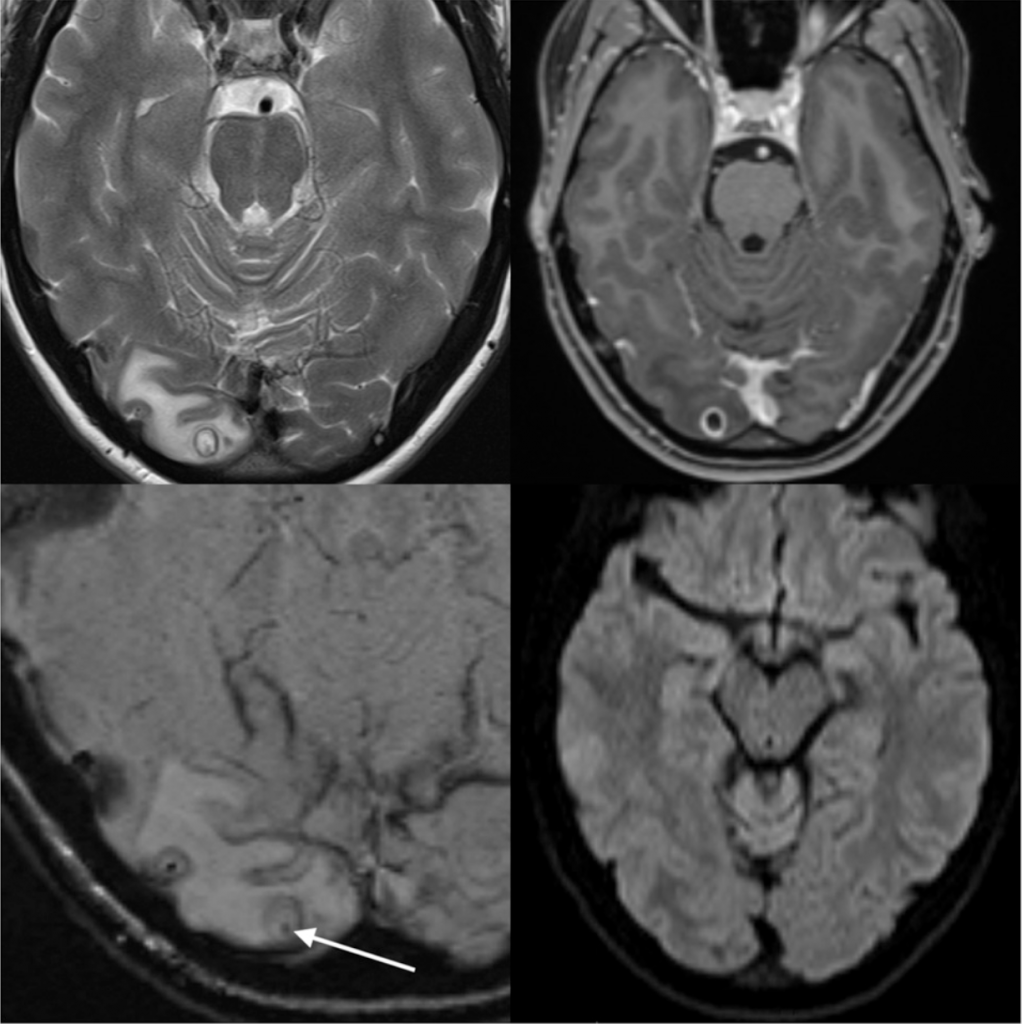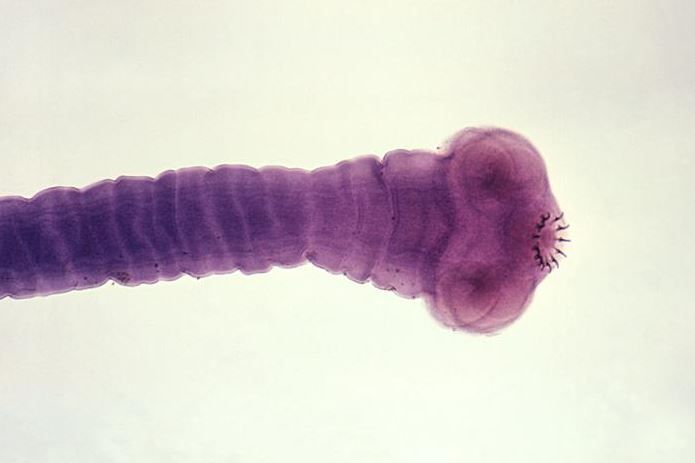Doctors discovered tapeworm larvae in the brain of a 25-year-old Australian woman with a history of worsening headaches. Surprisingly, the woman had no risk factors for the disease.
The American Journal of Tropical Medicine and Hygiene reported the first locally acquired case of Neurocysticercosis (NCC) in Australia. NCC is the most common parasitic disease of the nervous system in developing countries. Humans are infected as a result of the accidental ingestion of eggs of Taenia solium, a tapeworm found in pigs. The eggs then release larvae that travel via the bloodstream to different organs and form cysts.
Tapeworm Larvae identified in Brain tissue of 25-year-old
Although the 25-year-old suffered intermittent headaches regularly since the age of 18, her recent episodes had become quite odd. Additionally, the visual symptoms associated with her headaches also worsened causing her vision to blur.
When her latest headache persisted beyond 6 days despite the use of painkillers, she decided to go to the hospital. A Magnetic Resonance Imaging (MRI) scan revealed a single rim-enhancing brain lesion.

Doctors suspected it to be an abscess or a tumor. However, upon performing the surgery, doctors discovered the lesion was actually a cyst and did not contain human tissue. A PCR-based sequencing of the cyst’s genomic DNA confirmed the presence of tapeworm larvae.
Other than surgical removal of the cyst, the patient received no other treatment.
What was the Source of Infection?
Neurocysticercosis is not endemic to developed countries such as Australia, Japan, and, North America. Nor in countries where pork consumption is discouraged due to religious reasons.
Previous cases in Australia occurred in immigrants or returning travelers from endemic regions. However, the patient in the case report had no history of travel, contact with someone from an endemic region or, exposure to any animals other than pet dogs and cats.
Therefore, a clear source of infection has not been established in the case.
Experts propose that the patient’s work as a barista might have brought her in contact with an infected individual from an endemic region.
As a result of an increase in the ease and frequency of travel, it is not surprising to have more sporadic infections turn up in countries with low endemicity. Authors of the study hope their case report will raise awareness among physicians of the risks of locally acquired cases in non-endemic regions.
Reference:
Forster, Daniel, et al. “Case Report: Neurocysticercosis Acquired in Australia.” The American Journal of Tropical Medicine and Hygiene, 2020, doi:10.4269/ajtmh.20-0839.




